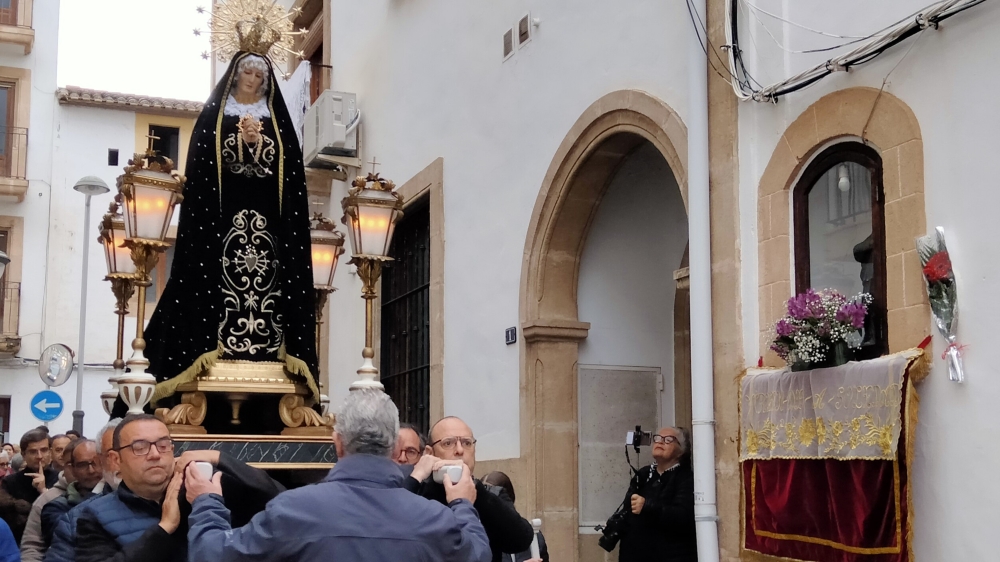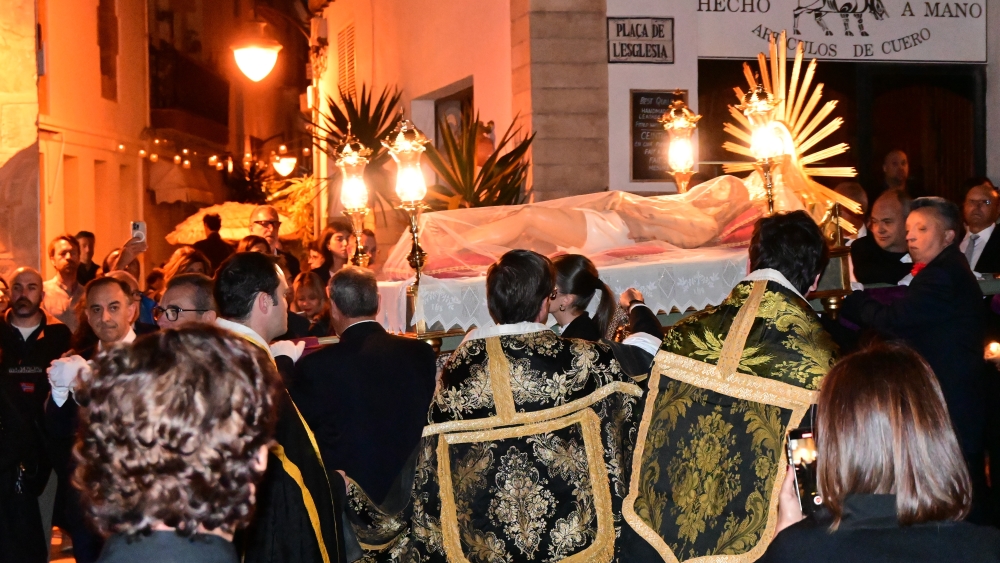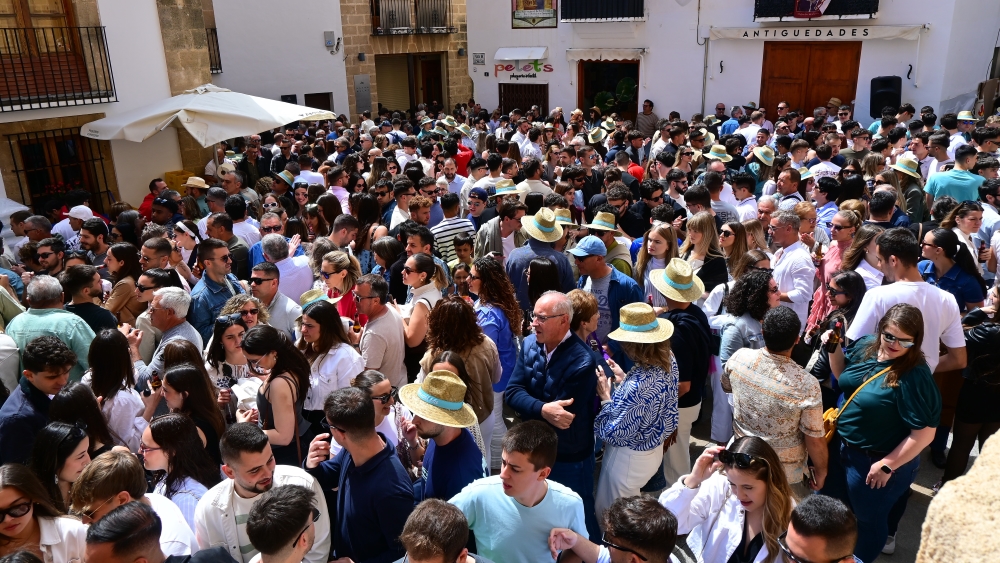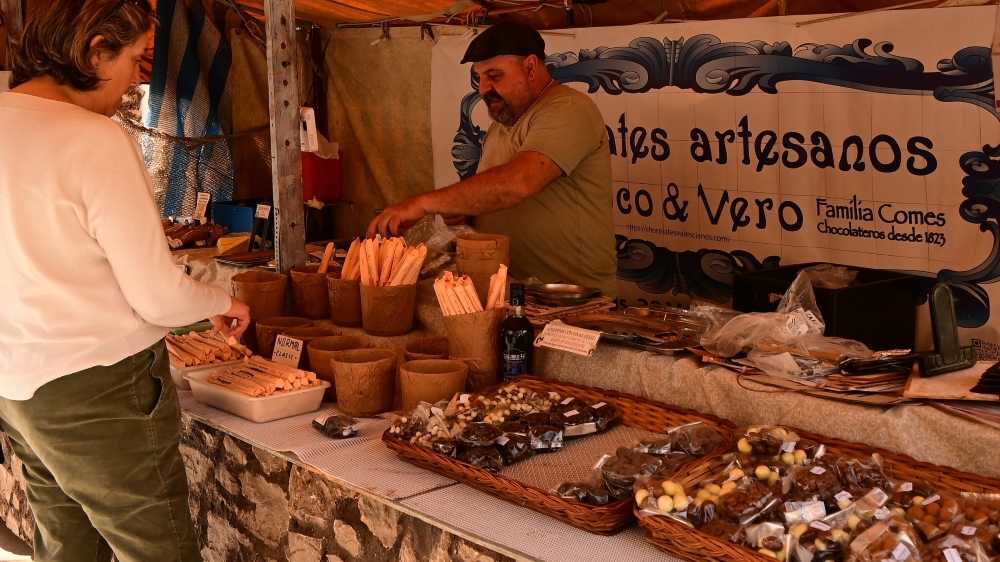
Easter – Pascua – is a major religious celebration in Spain and Xàbia has a full devotional programme to mark this special event. The festival commemorates the resurrection of Jesus from the dead after his crucifixion, the cornerstone of the Christian faith on which much of its religious doctrine and theology is based. Christians believe this event to be the most important in history, demonstrating a power over life and death which leads to eternal life, and is the most important to be celebrated during the year.
Semana Santa
Palm Sunday kicks off Semana Santa – Holy Week – during which Christians remember the Passion of the Christ, the final few days in the life of Jesus which began with his triumphal entry into Jerusalem (Palm Sunday) and ended with his crucifixion and death (Good Friday).
As it’s the biggest religious celebration of the year – much bigger than Christmas – it’s a popular week for the Spanish to take a holiday so resorts such as Xàbia will become livelier and it’s always best to reserve tables to eat in bars and restaurants throughout the week and especially over the Easter weekend.

Sábado de Pasión
Increasingly seen as a prelude to Semana Santa, it is a day dedicated to reflecting on the suffering of the Virgin Mary and the upcoming Passion of Christ. On this day, the Via Matris is often observed during which the Seven Sorrows of the Virgin Mary are meditated upon. This solemn early morning procession has recently been restored to the liturgical calendar in Xàbia, the image of Mare de Déu de Soletat – Our Lady of Solitude – carried on strong shoulders through the streets of the historic centre to the church of San Bartolome, briefly stopping along the way at seven pre-defined “stations” which symbolize the ‘Seven Sorrows of Mary’, a reading and a prayer said at each one.

Domingo de Ramas (Palm Sunday)
Palm Sunday takes place on the Sunday before Easter Sunday. Families get dressed up in their ‘Sunday Best’ and attend a special blessing at the church in Placeta del Convent. There is a short parade, the young girls carrying intricate sculptures made from palm leaves, the boys holding simpler designs whilst the adults carry tall single branches. These white palm leaves are natural but are the result of selected palm trees being covered in black bags earlier in the year to exclude all light and thus their leaves turn the white colour.
When the procession reaches the fortress-church of San Bartolomé, the doors are closed, “forcing” the priest to knock firmly on them so that the faithful can be allowed access for mass.

During Semana Santa, there will be several solemn and rather modest processions as several images are carried through the streets of the historic centre to the fortress-church of San Bartolomé in preparation for the grand solemn process on Good Friday.
Viernes Santos (Good Friday)
In the very early morning, at around 7.00am, the town’s treasured image of Jesús Nazareno is lifted aloft strong shoulders once again to make a brief return to the iconic blue-domed chapel of Calvario accompanied by the faithful for the important devotion of the Vía Crucis – the Stations of the Cross – where the path of prayer, represented by a series of fourteen images of the Passion – the stations – corresponding to particular incidents experienced by Jesus of Nazareth from his arrest to his crucifixion , burial and subsequent resurrection.
On this day, up until the first afternoon mass, there is a chance to climb up the steep, winding steps of the bell tower of the historic church of San Bartolomé for a unique view over the town and the surrounding areas.
As the sun begins to drop towards the horizon, the people of Xàbia will gather in to the church square in the heart of the historic centre for a solemn procession. Several images depicting the story of the crucifixion and death of Jesus are carried through the narrow streets of the historic centre, accompanied by slow music from the town’s band and emotion singing by an all-male choir. The slow procession and subsequent prayers take almost three hours to complete, the images accompanied by hundreds of residents and visitors carrying candles, watched by many hundreds more as darkness falls across the town. There is a brief clash of culture as the slow procession crosses the colourful Easter market stalls which line the Carrer Major over the long holiday weekend. When the procession returns to the church, the image of Christ lying down is carefully carried to the feet of the Virgin Mary.
A clacking noise will ring out across the town during this day. The church bells went silent on Jueves Santo and their sound replaced by the spinning wooden instrument known as the matraca. Restored to the bell tower in 2024, it is the only remaining such instrument in working order in the Marina Alta.

Sábado Santo (Holy Saturday)
In the evening of Holy Saturday, at around 10.00pm, the faithful will gather once again outside the historic-church of San Bartolomé, particularly outside the door of San Bartolomé. Inside the church is in darkness, despite a silent congregation occupying most of the available pews and seats. A fire pit burns, the flames symbolizing Christ, the light that overcomes the darkness of sin and death. The people gather around the priest who is carrying an enormous candle – the Cirio Pascual – onto which the Greek letters Alpha and Omega are placed to indicate that Christ is the beginning and the end of all things. Five grains of incense or cloves are also pushed into the wax, representing the five wounds of Christ crucified. Four of the bronze spikes which are used to puncture the candle date back to the 19th century; the fifth is a recent addition.
The candle is then carried into the dark interior of the church, followed by the faithful who squeeze into every available space for the Easter Vigil – la Vigilia Pascual – for this very special act. As the priest reaches the centre of the nave, devotees carrying much smaller candles reach up to light them from the great candle, sharing the flame to others around them so that the warm yellow glow spreads through the church; the faithful know that the resurrection of Christ is the source of eternal life and that it always overcomes darkness.
After a very long mass – it could take up to two hours – the faithful leave the church to line the church square outside the door of San Gill, joined by curious onlookers. The image of the Risen Christ is carried out of the door and marched away to one end of the building; the image of the Virgin Mary is carried out of the main door and prepared for a very special occasion, one which has recently been restored to the Easter celebrations in Xàbia – El Encuentro.
From opposite sides of the church, the images are slowly carried towards each other, the Virgin carried by an all-female team whilst the Risen Christ by an all-male team. Just before coming together, they stop and those at the front of the image of the Virgin bend their knees to make it “bow” to the Christ. A line of firecrackers known as a traca breaks the solemn moment whilst confetti feels the air as those watching break into applause. The two images are then carried back into the church to complete the celebration of the Resurrection.

El Domingo de Resurrección (Easter Sunday)
There are a number of Eucharist services throughout the day at the churches of San Bartolomé in the town and Loreto in the port.
But one of the popular acts of the day is the traditional gathering of the penyas and associations in the square around the church in the heart of the historic centre, a noisy and sometimes boisterous couple of hours in the early afternoon during which a number of temporary bars offer food and drink whilst hats, cakes and other home-made items can be bought at several stalls. It’s a great occasion to bring the people of Xàbia together as the groups boost their funds for participating in the town’s fiestas or to provide help and assistance to others. It’s all over by mid-afternoon and everyone drifts off to enjoy a lunch together in one of the surrounding bars and restaurants.
As the evening approaches, the party often continues in the form of tardeos at several bars in the historic centre and down in the Arenal, which can be best described as “daytime nights-out”. Originating in the Alicante region, the tardeo could be inside (or outside) a bar with a DJ or live band, in a nightclub which will open its doors many hours earlier than normal, or, as has recently become the case in Xàbia, a full discomóvil experience in the Plaza de la Constitución with a temporary bar – the baret – which is organised by the Fogueres Commission as another means to raise some more essential funding for the forthcoming fiestas.

The Easter Craft Market
The craft market is one of the oldest in the Comunidad Valenciana and fills the streets with great colour and fantastic aromas from Good Friday until Easter Monday. There are many stalls offering hand-crafted items including decorations, toys and souvenirs as well as tasty sweets and chocolate and marvellous spices. In the Placeta del Convent there are a number of food stalls offering hams, cheeses, olives as well as snacks such as kebabs, sausages, pizzas and much more.
With the family entertainment on offer throughout the weekend, including children’s shows, traditional music and dancing, workshops and theatre, it’s a great option for all the family to enjoy over the Easter period.


